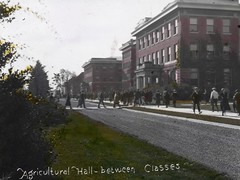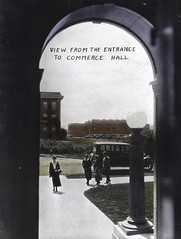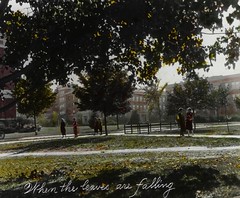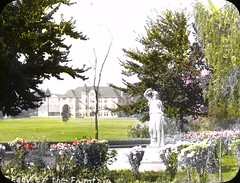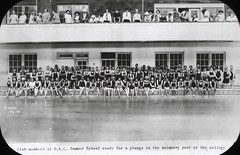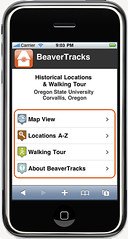 Thanks to the OSU Retirement Association for compiling this list!
Thanks to the OSU Retirement Association for compiling this list!
The exact number of OSU buildings named for women is not as clear cut as one might hope. To paraphrase a recent U.S. President, it all depends on how you define the phrase “named for.” Under the strictest possible criterion, “named for” requires naming in honor of a single, specific, identifiable person.
Using that criterion, here is their list of thirteen (13) qualifying buildings, in alphabetical order.
- Azalea House: Named for Azalea Sager, a Home Economics Extension leader who raised the money to build this women’s co-op.
- Bates Hall: OSU Home Economics graduate Mercedes Bates went on to become not only the original Betty Crocker but also the first female Vice President of General Mills.
- Callahan Hall: Ida Burdette Callahan taught English for 40 years, lived in women’s residence halls, and was one of three women responsible for starting the Corvallis Public Library.
- Dawes House: This house was the home of Melissa Martin Dawes, Professor of German.
- Gladys Valley Gymnastics Center: Named for Gladys Valley, who was a huge fan of gymnastics.
- Heckart Lodge: Zelia Heckart ran a local boarding house for men for many years.
- Kidder Hall: Ida Angeline Kidder, librarian from 1908 to 1920, fought constantly for better library facilities for the growing campus.
- Milam Hall: Ava Milam Clark was Dean of Home Economics for four decades, from 1913-1952.
- Plageman Hall: Named for an early staff member who was a nurse for student health services.
- Richardson Hall: Ms. Richardson donated the resources which allowed for this facility to be built.
- Sackett Hall: Beatrice Walton Sackett was a member of the Board of Regents.
- Snell Hall: Margaret Comstock Snell, M.D., was Head of Household Economics from 1889 to 1909. The building now called Ballard Hall was the original Snell Hall and was a women’s dormitory. Dr. Snell established the first College of Home Economics in the western United States, which began as a single classroom on the third floor of what is now Benton Hall.
- Waldo Hall: Like Beatrice Sackett, Clara Waldo was a member of the Board of Regents.
If we range beyond the strict boundaries of the Corvallis campus, we can add a 14th entry: Potts Guin Library, HMSC: Marilyn Potts-Guin was the founding librarian at the Hatfield Marine Science Center, on the Oregon Coast at Newport.
Two buildings are named for couples or families which, of course, included women: Dixon Recreation Center: Jim and Jeanette Dixon were long time members of the Department of Physical Education and championed recreational sports. Valley Library: Our library recognizes the generous contributions of the Valley family, which includes Gladys (noted above) and her daughter, Sunny.
That brings the list to 16. But we aren’t quite done.
The list grows to 17 when we add the one building most recognized of all for acknowledging the women of OSU: The Women’s Building: This one speaks for itself!
**Larry Landis, University Archivist and unequivocal campus building expert, reminded me that Halsell Hall was named for Carrie Halsell, OSU’s first African-American graduate.**
[This listing organized by Gary Tiedeman, based mostly upon information gathered and assembled by Jo Anne Trow and partially upon additional material found in the OSU Archives.]







